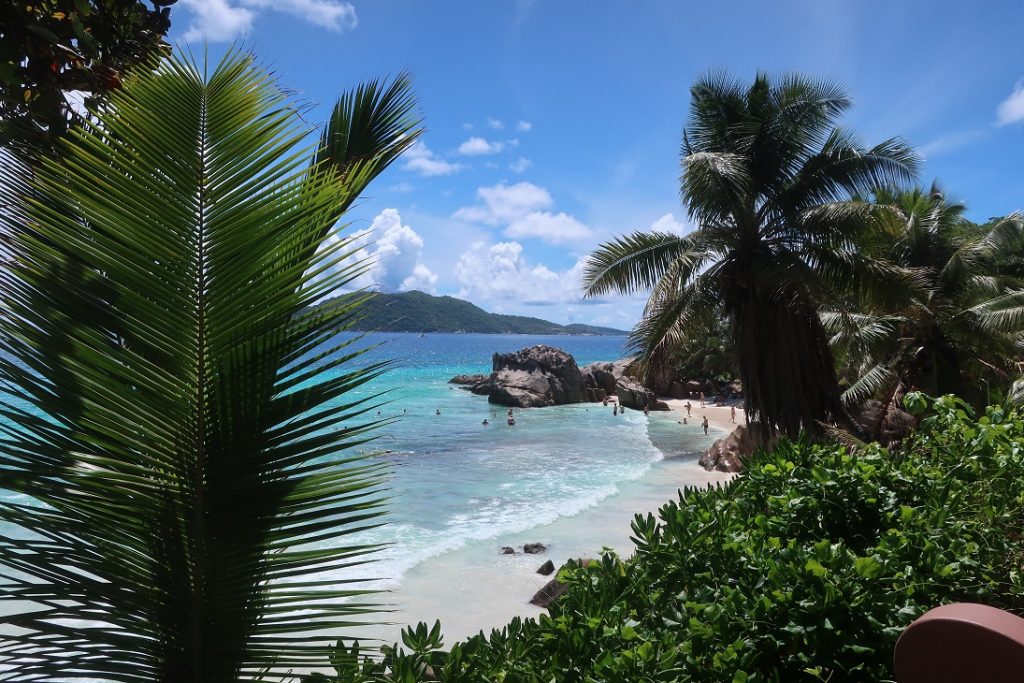
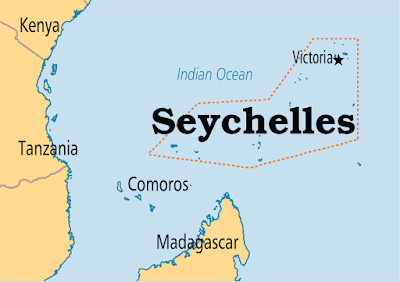
I’m in the Southern Hemisphere 320 miles south of the Equator in Seychelles which is an archipelago comprising 115 islands in the Western Indian Ocean. Right now, I’m on the largest island of Mahe, and night has fallen fast. The night sky is clear and full of stars which are easy to see because there is little light pollution down here. Not a street light in sight. I watch 4 satelites cross the sky. I search for the Southern Cross with which I’m familiar from living in Australia but the waxing moon attracts my attention. It is in the opposite position from how we view it in the Northern Hemisphere and looks like a larva reclining in a sun lounger.
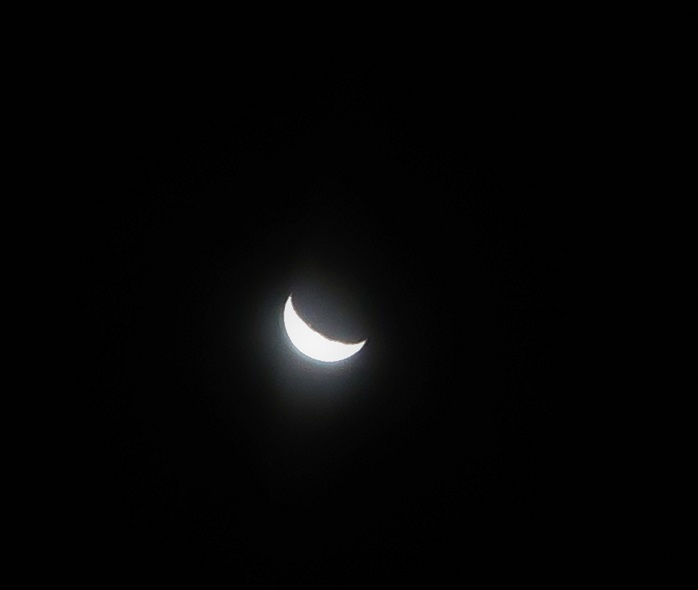
Woodsmoke wafts up to the balcony from smoky fires lit outdoors around the nearby village to repel mosquitoes rather than to provide warmth. The humid tropical climate is warm around the clock with daytime temperatures reaching around 33 degrees˚ Celsius during my visit. I can smell the sweet perfume of frangipani flowers drifting up from the trees below, and the waves at high tide are crashing on the shoreline just below the hotel decking and open- air restaurant. I can hear Creole music coming from an open- air café/bar across the road from the front of the hotel and it’s all very atmospheric and memorable.
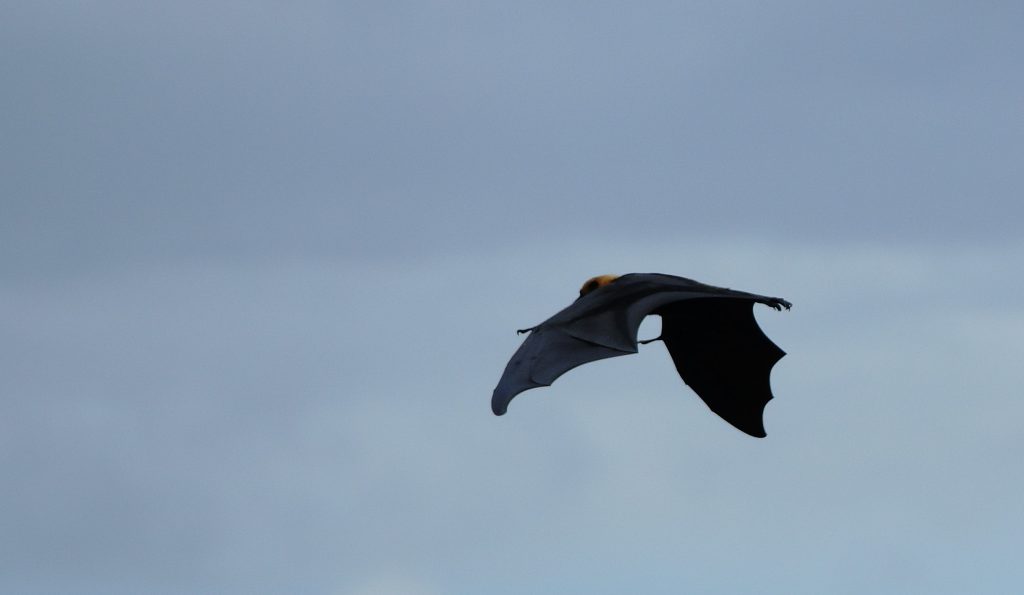
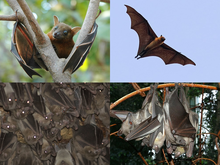
Earlier, as evening approached, I watched Seychelles bats (Seychellensis pteropodiae) fly overhead in search of fruit which is their staple diet. They are enormous slow flying crepuscular creatures and have an important roles in dispersing fruit tree seeds. These megabats from the pteropodidae family are also known as flying foxes, or old- world fruit bats, and they probably evolved in Australasia where they are common. They can grow up to 3.2 lbs (1.45 kg) in weight and have wingspans of up to 5.6 ft (1.7 m) so you can imagine how impressive these animals are as they flap slowly across your field of vision; dark silhouettes against the early evening sky.
Visit.
Sadly, I am nearly at the end of my visit to Seychelles and leave for the long journey back to the UK via Doha, Qatar tomorrow. The main reason for this family holiday has been to celebrate the marriage of our son Kimball to my lovely daughter-in-law Maayan on March 20th 2023 on the third largest Island of La Digue. They were married on Anse Source d’ Argent beach in brilliant sunshine with a background of spectacular rocks and a turquoise sea.
Investigating Local Beekeeping.
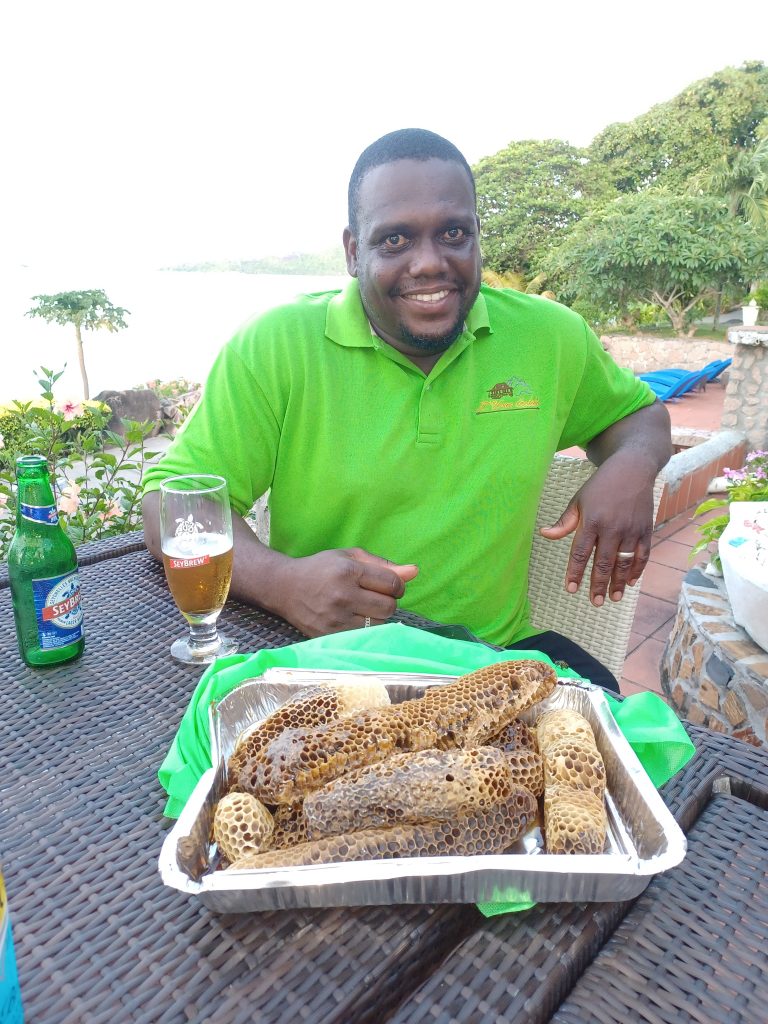
Whenever I visit another country, I try to connect with beekeepers to learn as much as I can and exchange ideas and information, and so I arranged to meet a local beekeeper during my stay on La Digue. When the wedding plans were announced in December, I contacted the Seychelles Beekeeping Association and their Vice-President Patrick Samson kindly gave me contact details for Norman Dogley who agreed to host our visit to the bees.
L’Union Estates.
Norman is the farm manager for L’Union Estates (https://www.lunionestate.com/ ) on La Digue and also a very experienced beekeeper. The estates once produced coconut oil on a large scale then the palm oil industry out-competed coconut production. There was also a large vanilla plantation exporting vanilla round the world. Vanilla is still grown here today but it is a high maintenance crop as you will find out soon, and production here supplies only the local market now. Norman is in charge of running the farm which grows cattle, hens, pigs, goats, vegetables, vanilla, cinnamon, and other crops.
The estates rely on tourism, and visitors pay a fee to enter the park which gives them access to a large area including some of the most beautiful beaches on the island. Tourists can look round the old plantation buildings and see where the coconut/copra crops were processed and learn the history of the estates. There are Aldabra giant tortoises, Aldabrachelys gigantea, weighing in at up to 300 kg with a potential lifespan of around 200 years. These behemoths come from the Seychelles Aldabra Atoll and there is a big market from them as pets so individuals keep them as breeding pets since they produce many eggs which are a valuable resource. Cycling back to our hotel at the end of the day we found one of these tortoises sitting in the middle of the road posing for photographs.
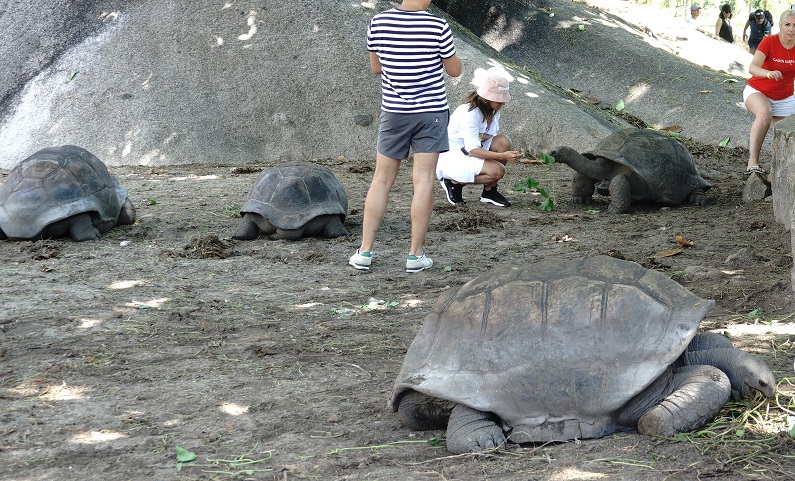
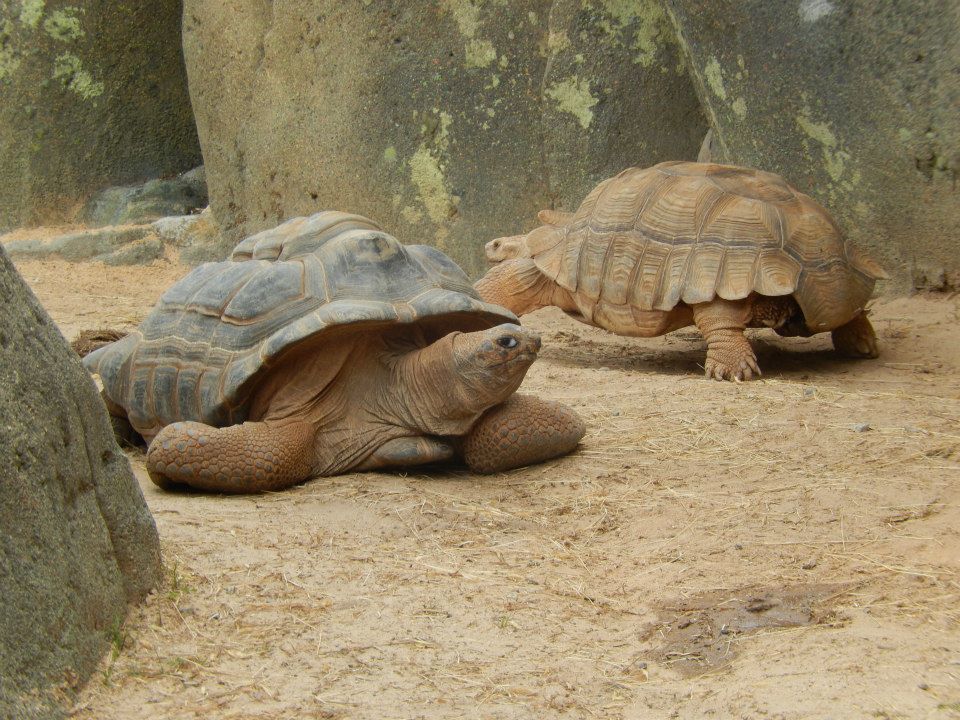
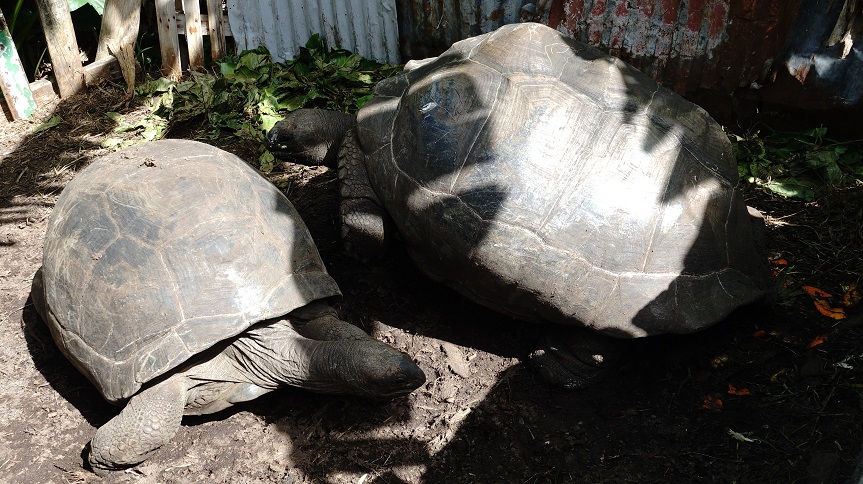
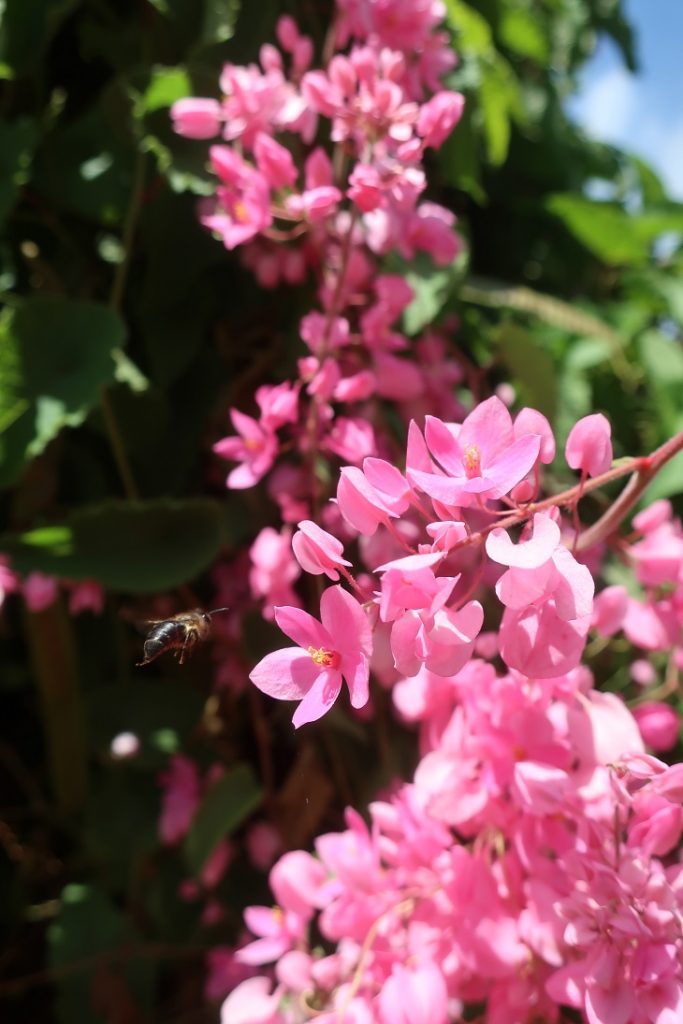
The honey bees on the Seychelles are Apis mellifera unicolor and native to Madagascar which is to the south of Seychelles. Apis mellifera ligustica was introduced to the islands so some bees are have yellow stripes while others are darker but they are noticeably smaller bees than any honey bee that I have seen before. Maayan is not a beekeeper (yet) and she remarked on the small size compared to our bees in Scotland.
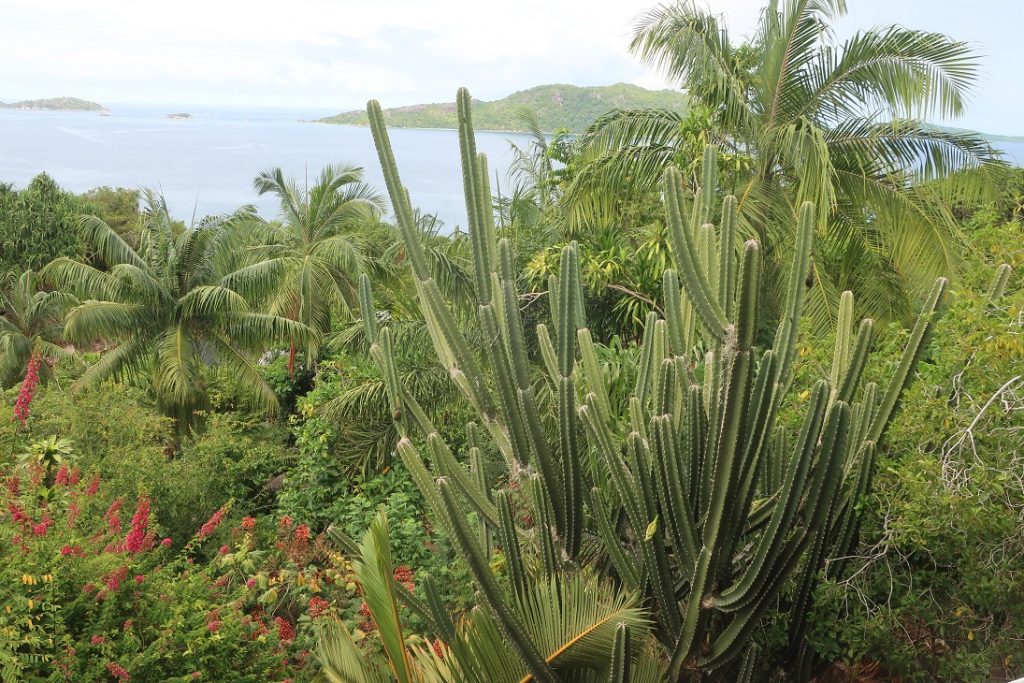
La Digue is a very beautiful island of 10.08 km 2 with a resident population of 3,430. The tropical vegetation is lush and green despite a shortage of rain and all the hills are tree- covered. It is a popular tourist destination and a venue for beach weddings so around 6,000 tourists a day visit the island. Some come on day trips but the majority spend at least a few days and perhaps island hop during their holiday.
Bicycles are the main form of transport for tourists though some prefer to take taxis since nowhere is very far away. It is possible to travel by oxcart and we saw one heading in the direction of the ferry at a great rate. The tourist areas are very clean and devoid of rubbish unlike most parts of the UK. Refuse is collected daily. The people of Seychelles are working hard to reduce their impact on the environment and there is a move to make electric cars and other vehicles compulsory, and to rely on solar energy which will be produced on a larger island and sent over via cable.
The temperature ranges from 24 -32˚ C. October to March is the rainy season when it is hot and humid and we experience one day of rain but the rest is sunshine every day. The Northwest Trade Winds blow from November to March making the sea choppy for snorkelling. The cooler Southwest Trade Winds blow from April to October and this is a good time to visit with the best months for calm seas being April, May, October, and November.
Norman Dogley.
Norman is one of the most interesting beekeepers that I have had the good fortune to meet in a long time. He is a young man in his late 30 ’s and has been beekeeping since he was 12 years old. His father tried unsuccessfully to keep bees on Mahe, where Norman was brought up, but Norman thought he would give it a go himself. He was inspired by his local priest who told him about life inside a hive of honey bees and Norman was fascinated by the order of things in the colony and how it functioned. He had 6 mentors all in their 60’ s supporting him during his early years, and I asked him if he ever had conflicting advice but he told me that he was advised to listen, analyse, and choose his own way. I noticed later that he had a great knack of finding the queen quickly and he explained that one of his mentors would put a few bees down the back of his neck if he was going too slowly through a hive. Norman learned quickly from that experience.
A Love of Farming.
Farming must be in Norman’s DNA, and at aged 9 he started making an income from farming and selling cress. His grandfather was a farmer and encouraged him greatly. By the age of 14 he was farming over 75 pigs by himself and was able to put himself through further education and get an agricultural degree on the income from his own endeavours. This course took him to Kenya to learn different farming methods to suit the tropics. Norman is a natural teacher and currently mentors Paul a young agricultural student from Kenya who is on La Digue for a year. He is also teaching Paul practical beekeeping skills. Paul has already done an apiculture course so this experience is helping to consolidate his learning.
In the upcoming blogs I’m going to give you more details about my visit to Norman and cover lots of different things including available forage, some beekeeping practices and challenges, and the relocation of a wild colony from a plastic oil container which was an amazing experience.
If you enjoyed reading this, you can subscribe to receive future posts by email. Also, if this article helped you with your work, please consider making a small donation to keep our site running. You can do this through the “Donate with Paypal” button that appears at the side of the screen if you are using a desktop, or by scrolling towards the bottom of the page if you are using a mobile.
Thank you, Ann 🐝

It’s a tough job, but someone’s got to do it! Looks lovely there.
It is lovely, Steve. This sort of visit is just up your street following your adventures researching your very interesting book, “Interviews with Beekepers”. I’ve tried to add a link but failed.
Looks amazing. We need more photos!
More photos coming up on Friday, Cynthia.
I visited La Digue last year Ann, enjoyed the cycling, beaches and the tortoises! Bought some local honey too – tasted of tomatoes. Thanks for the post, brought back some nice memories 🙂
Nice to hear about your visit, Elaine, and interesting to hear about the honey. The honey that I tasted was dark and fruity.
So informative and full of island wildlife eg the bats and turtles, as well as -of course-honeybees.Can`t wait for the next tropical instalment blog!
Glad you enjoyed it Gelda and thank you for commenting. Part 2 coming up on Friday.
Norman is an exceptionally warm and welcoming gentleman, and it was a great pleasure to meet with him and to be shown something of beekeeping on Seychelles. Thank you Norman.
Yes, indeed.
What’s so magical about your trip is the insight beekeeping provides into life in another country. Looking forward to part 2!
Thank you, Anne, for your enthusiasm. Magical is the word! And, yes, learning about another country from engaging with fellow beekeepers is a real priviledge, and one steps away from being a tourist for a while.
Looks an amazing trip, Ann!
It was, Fiona. Truly magical.